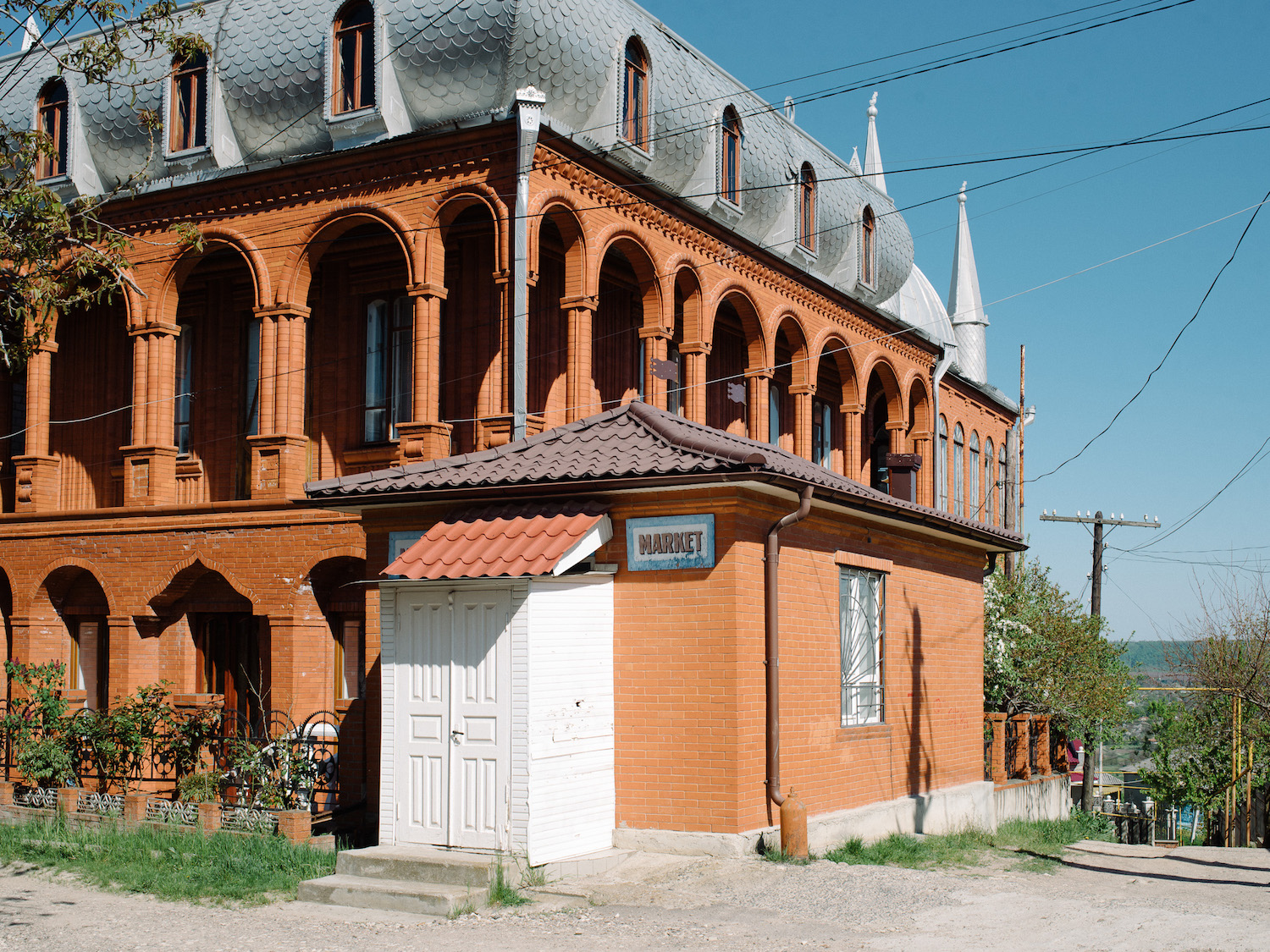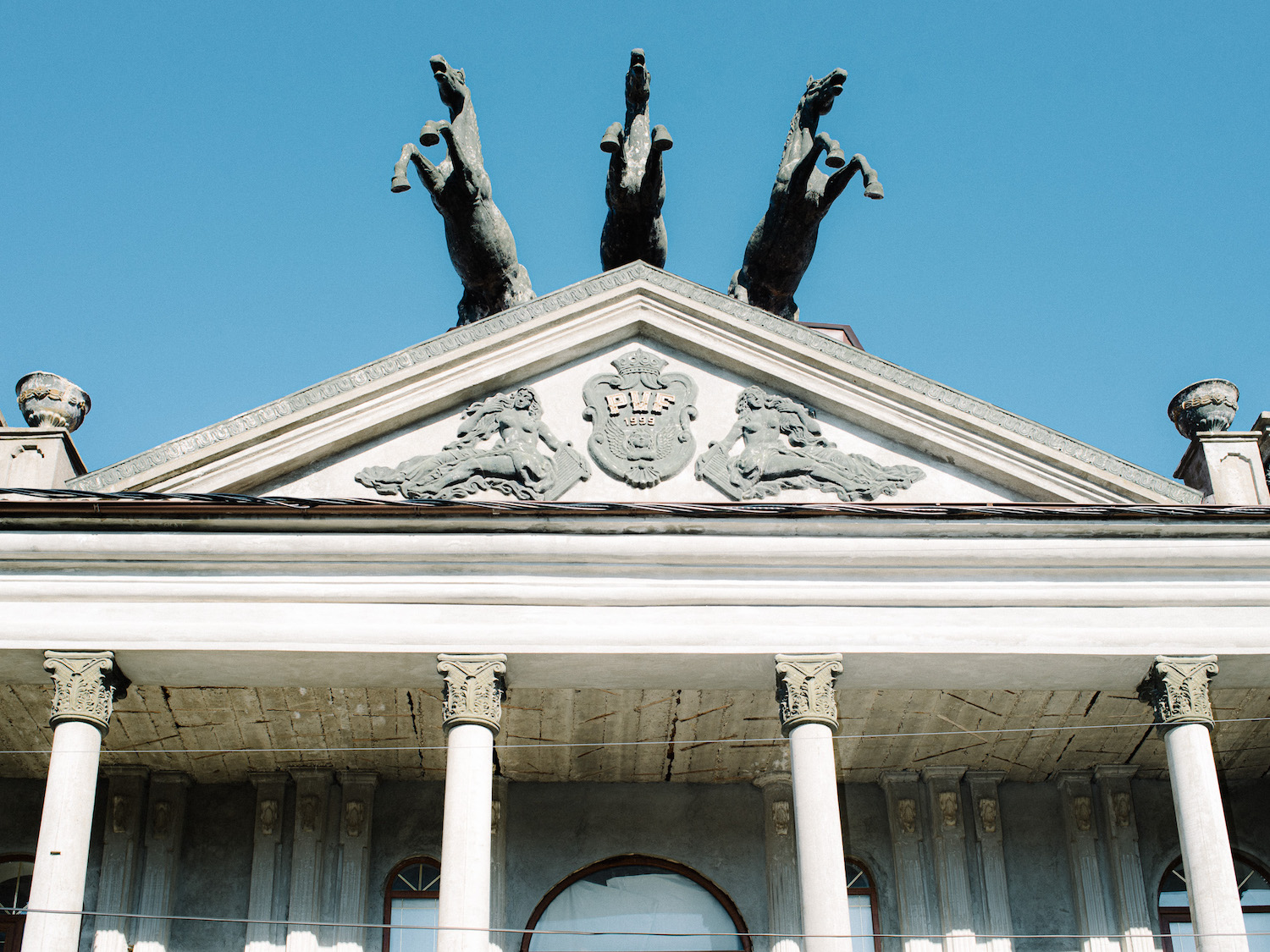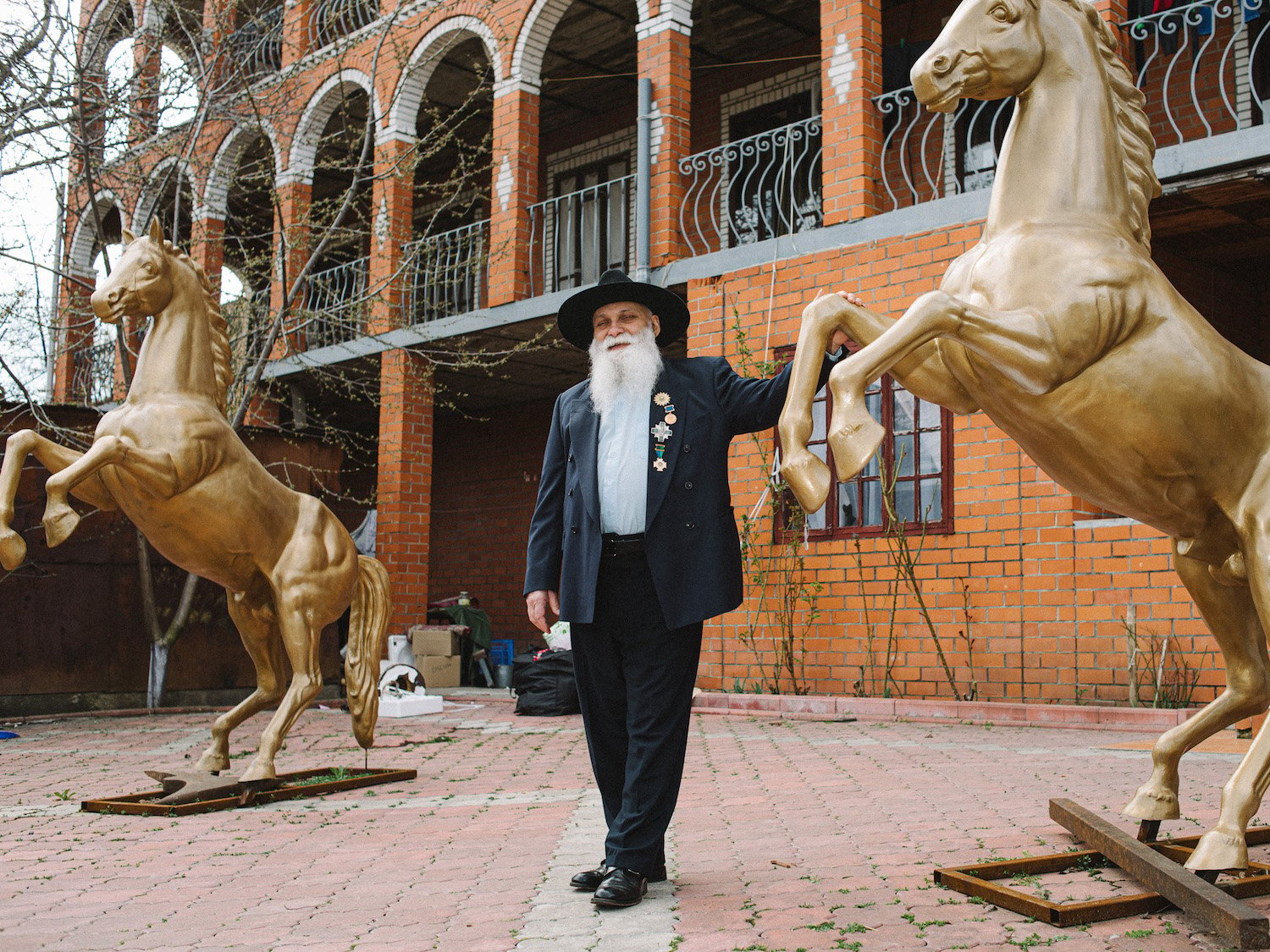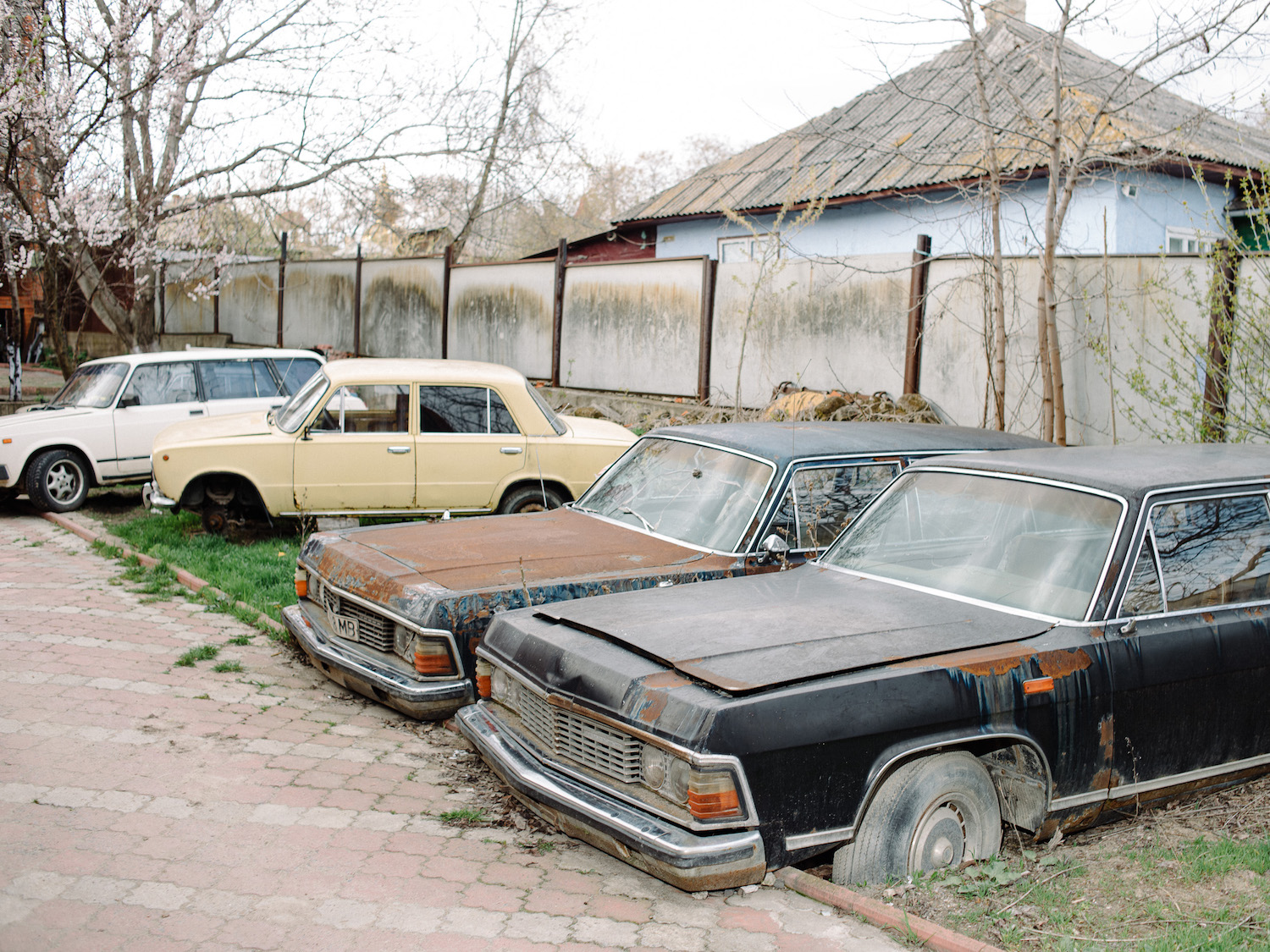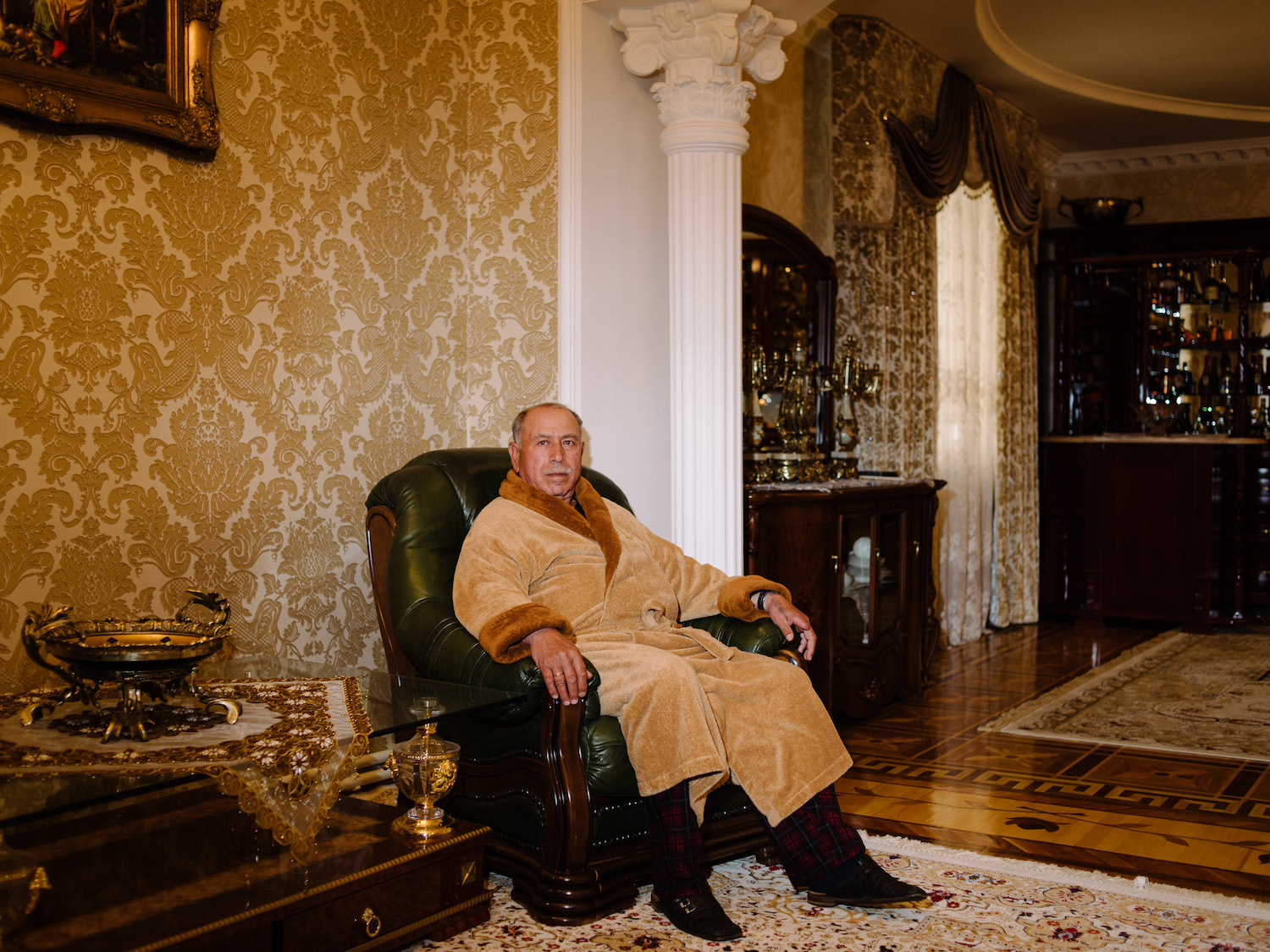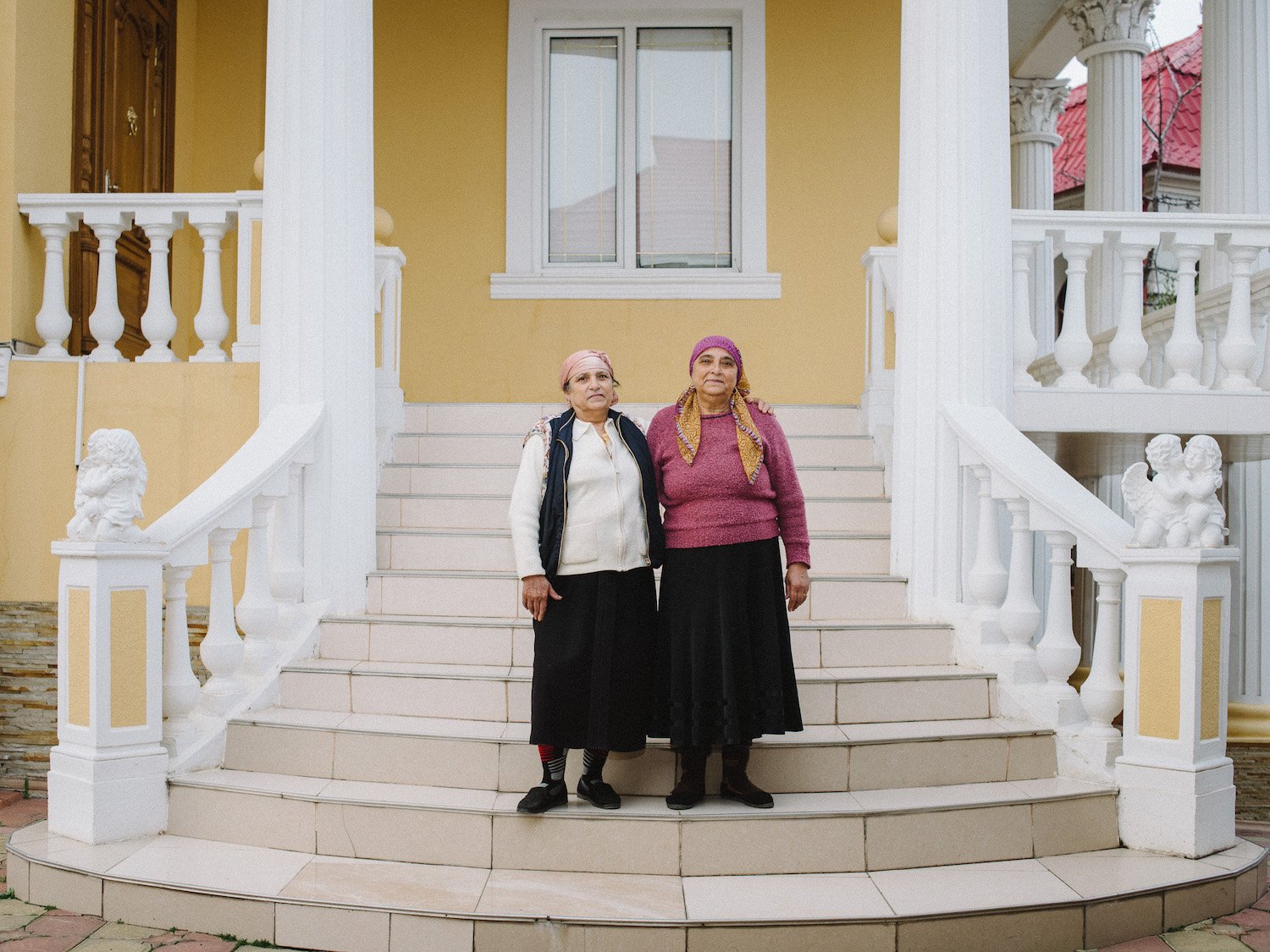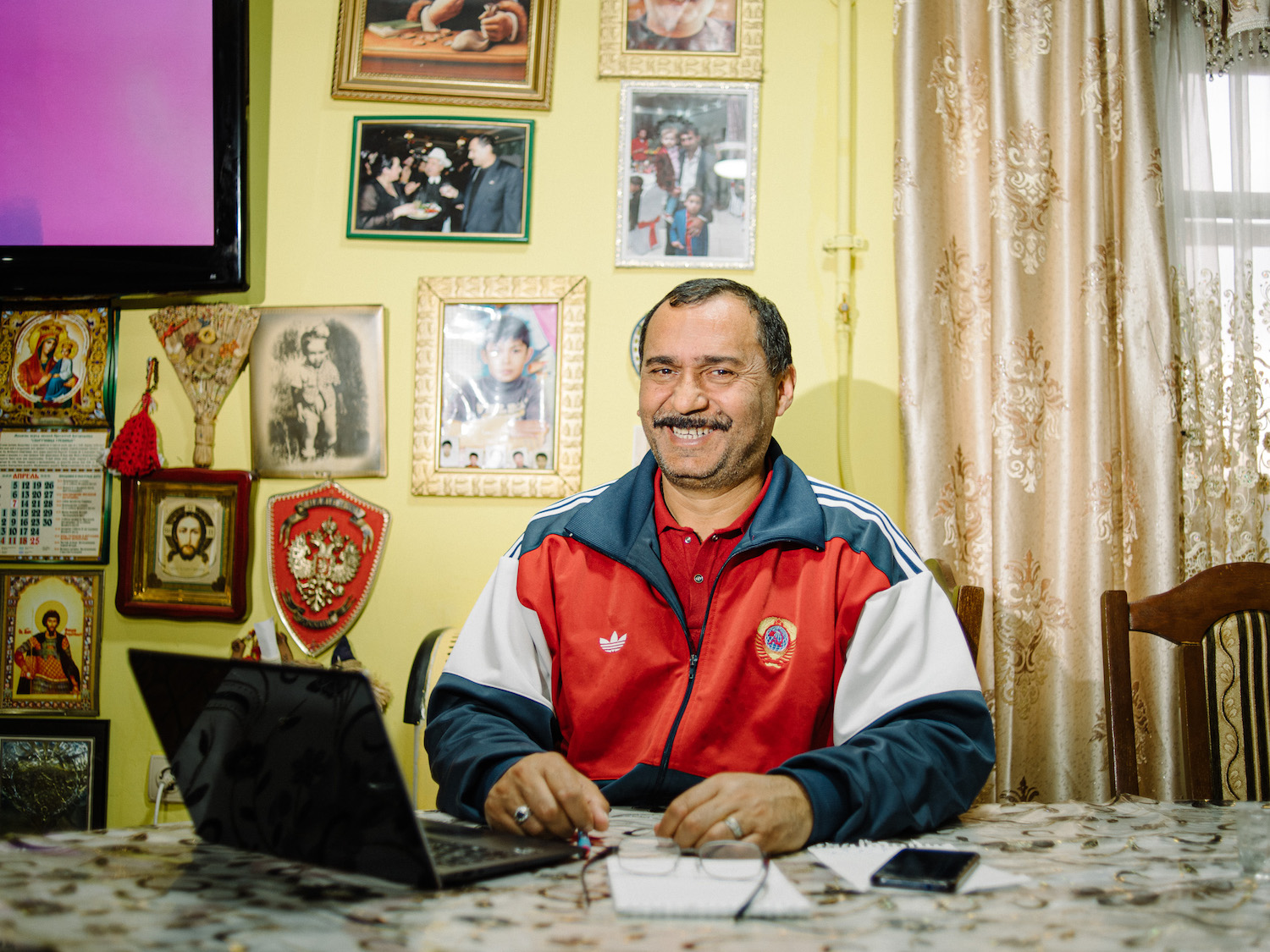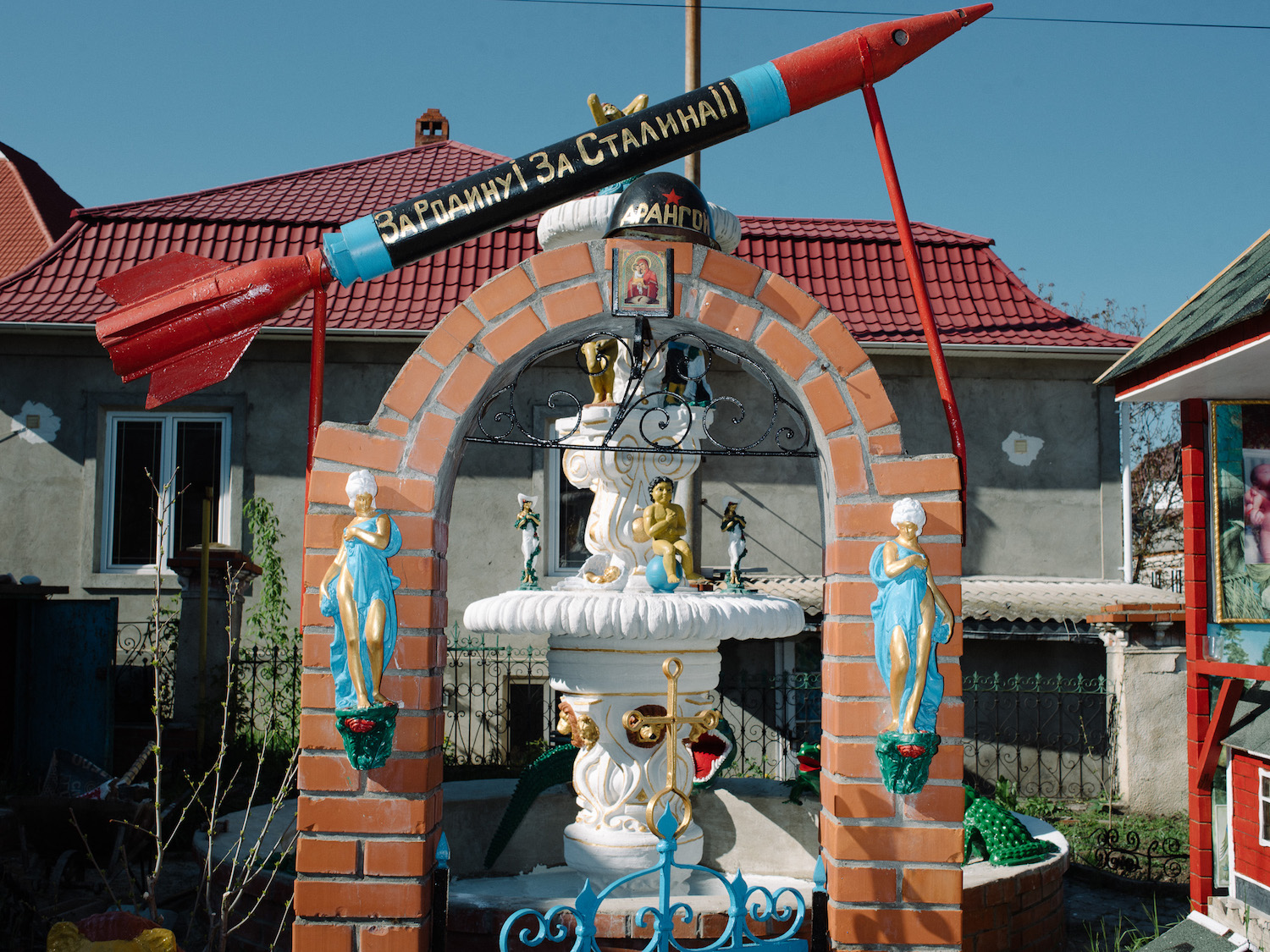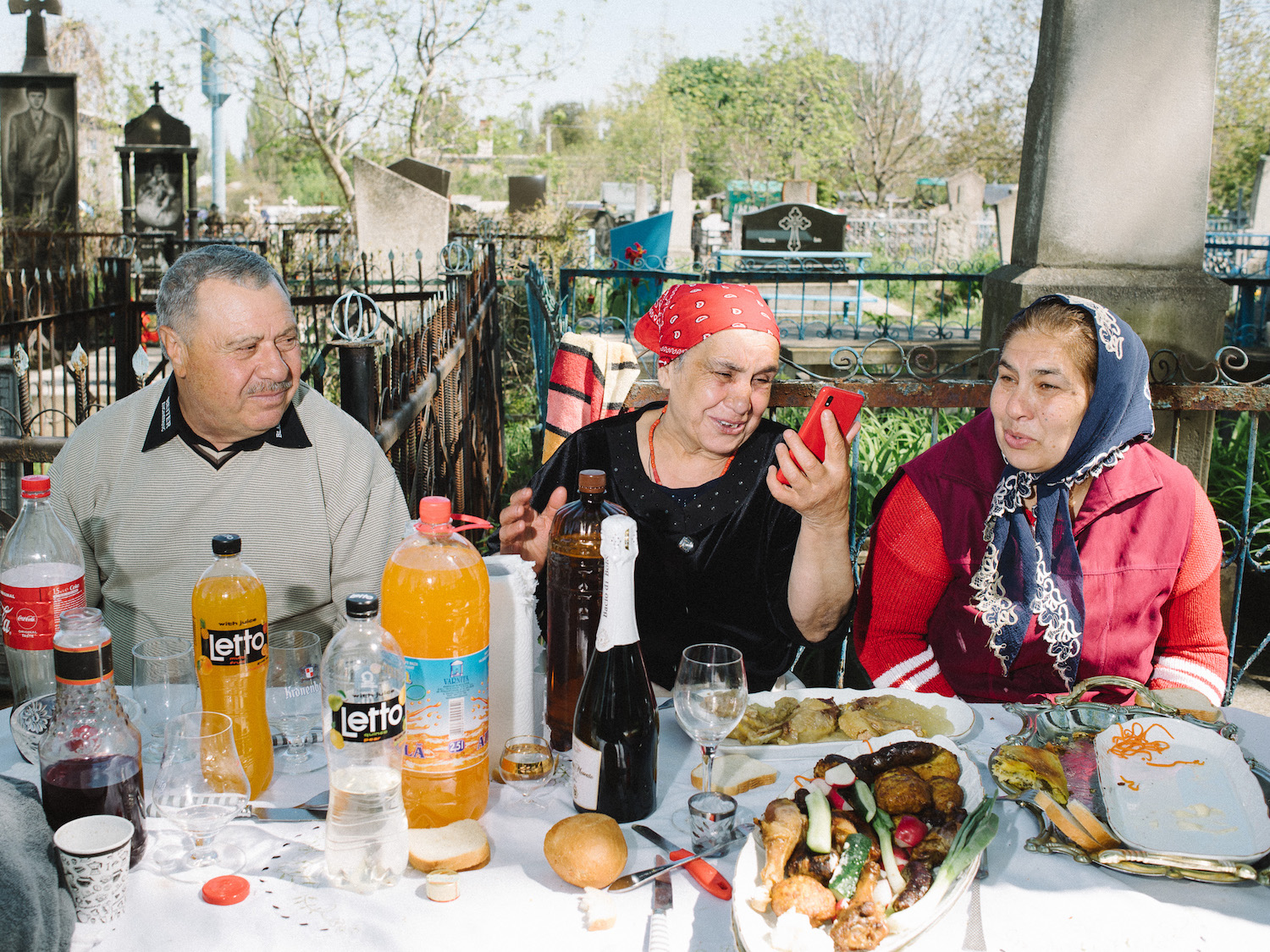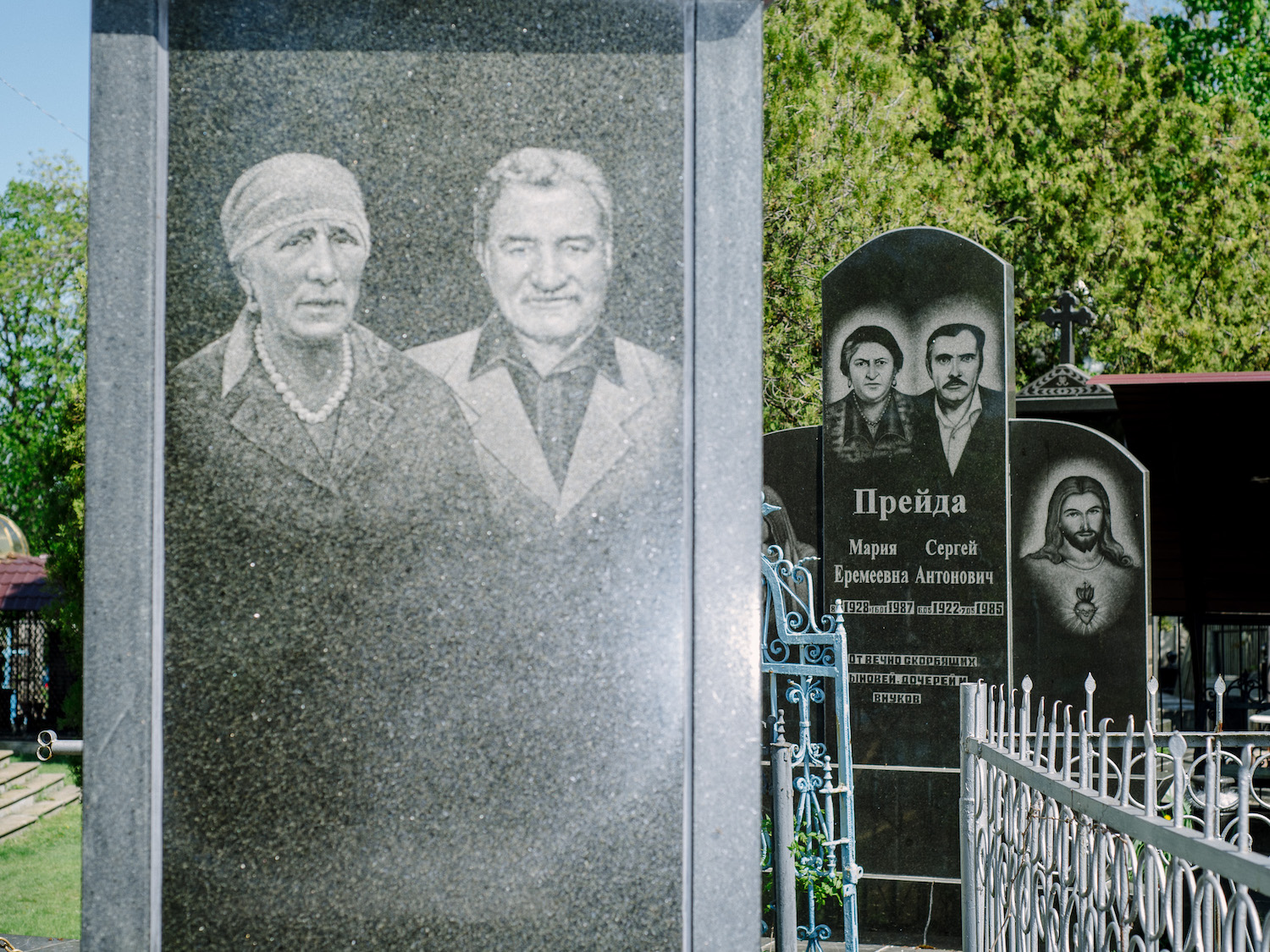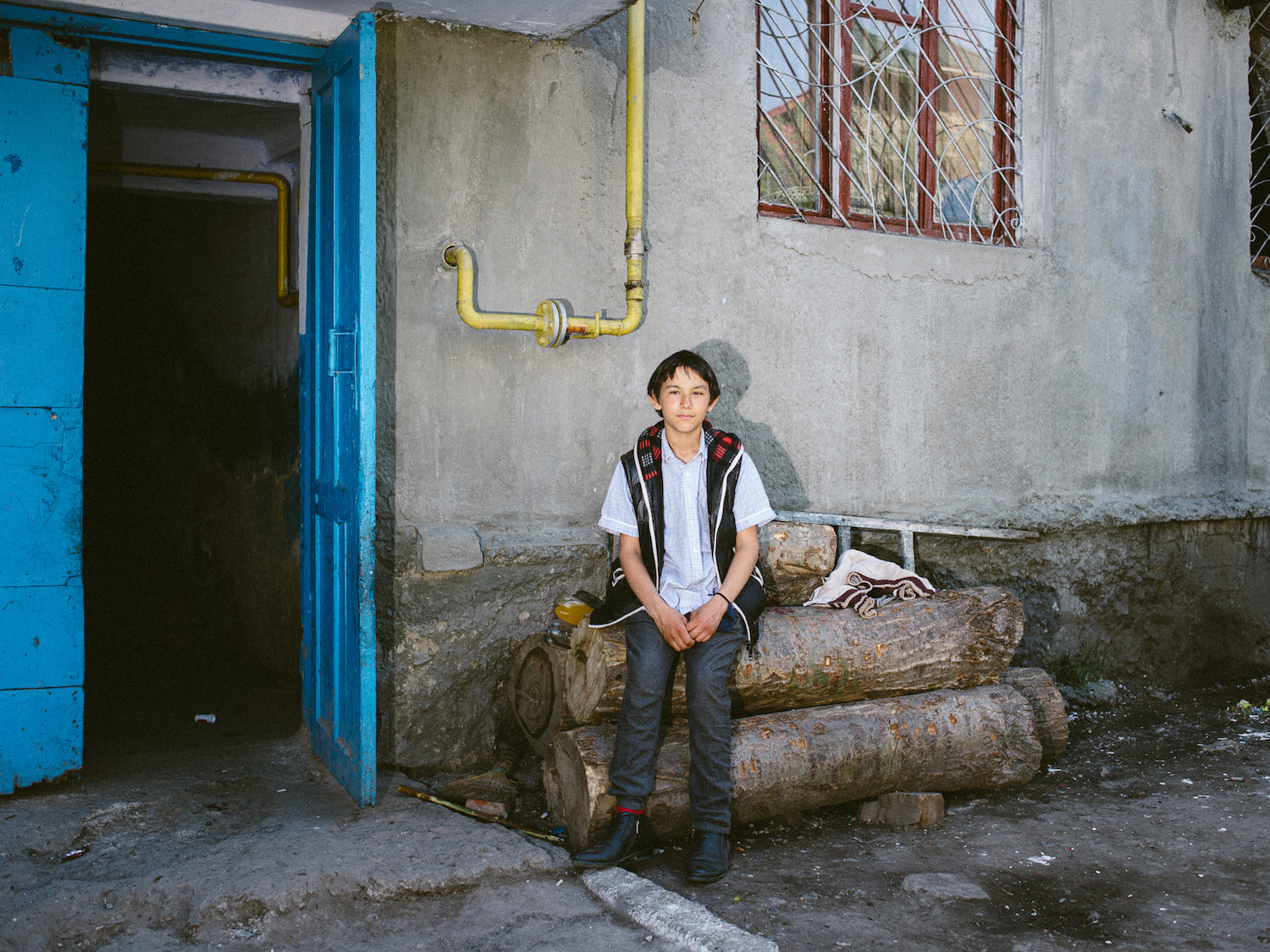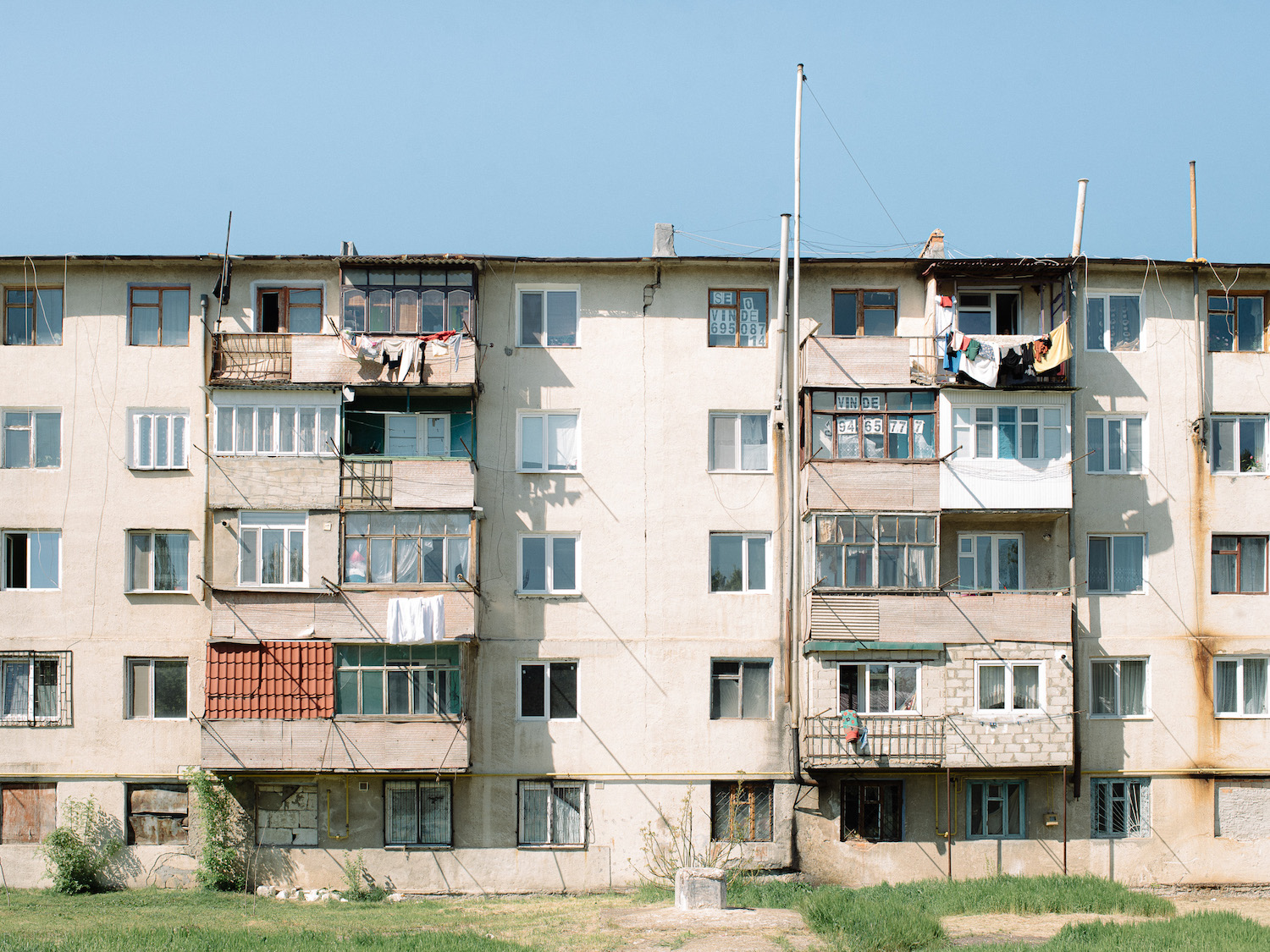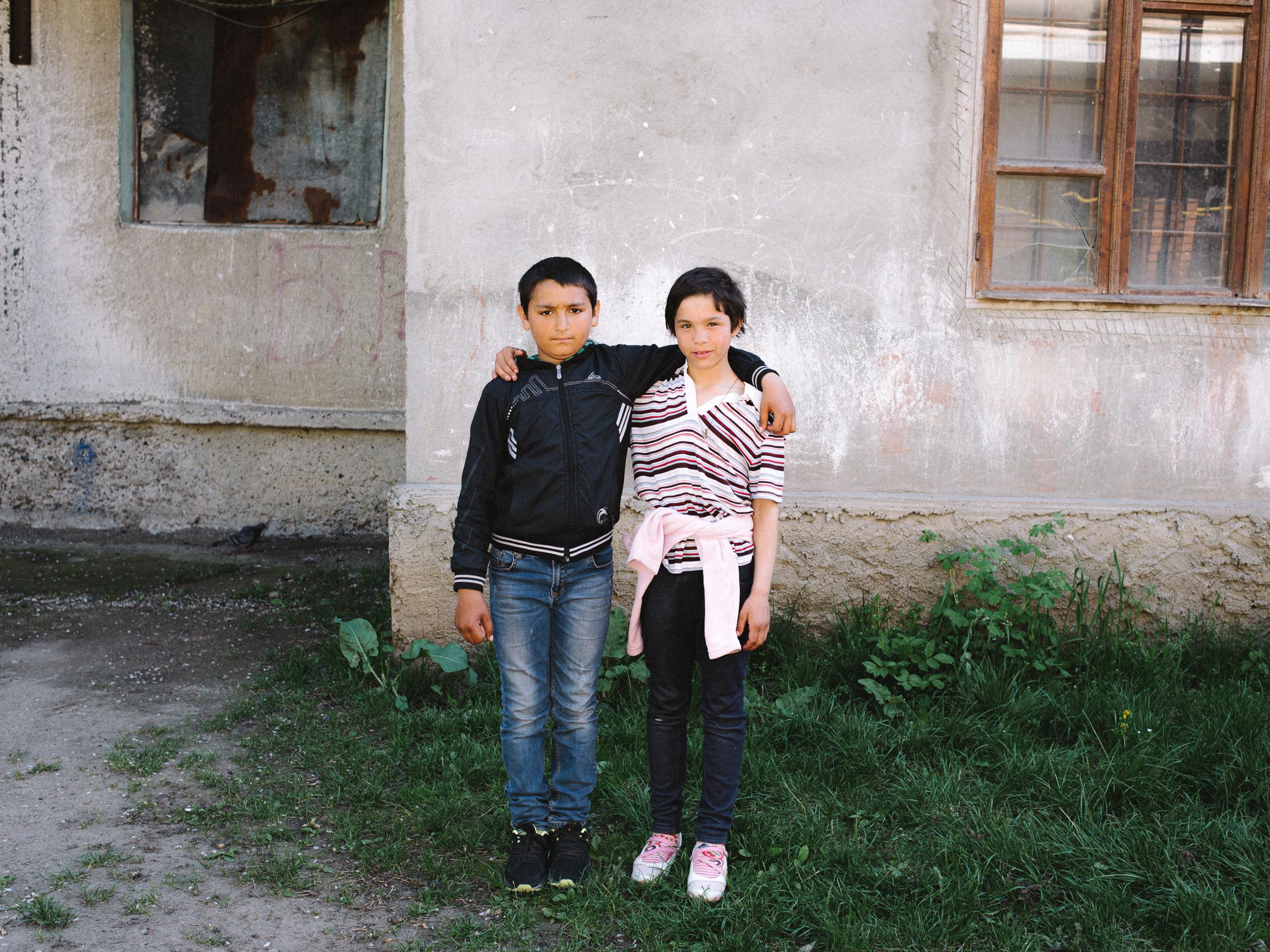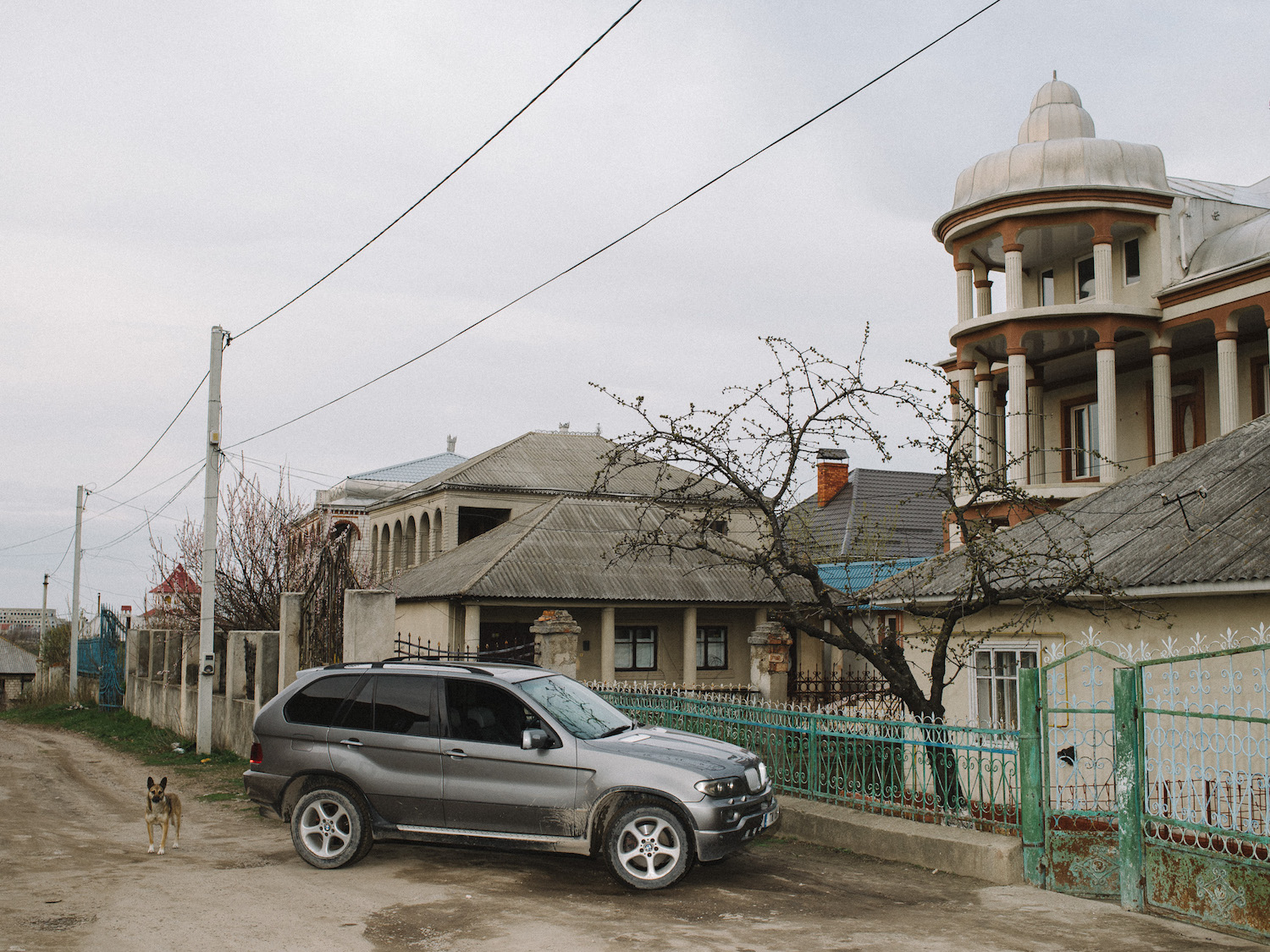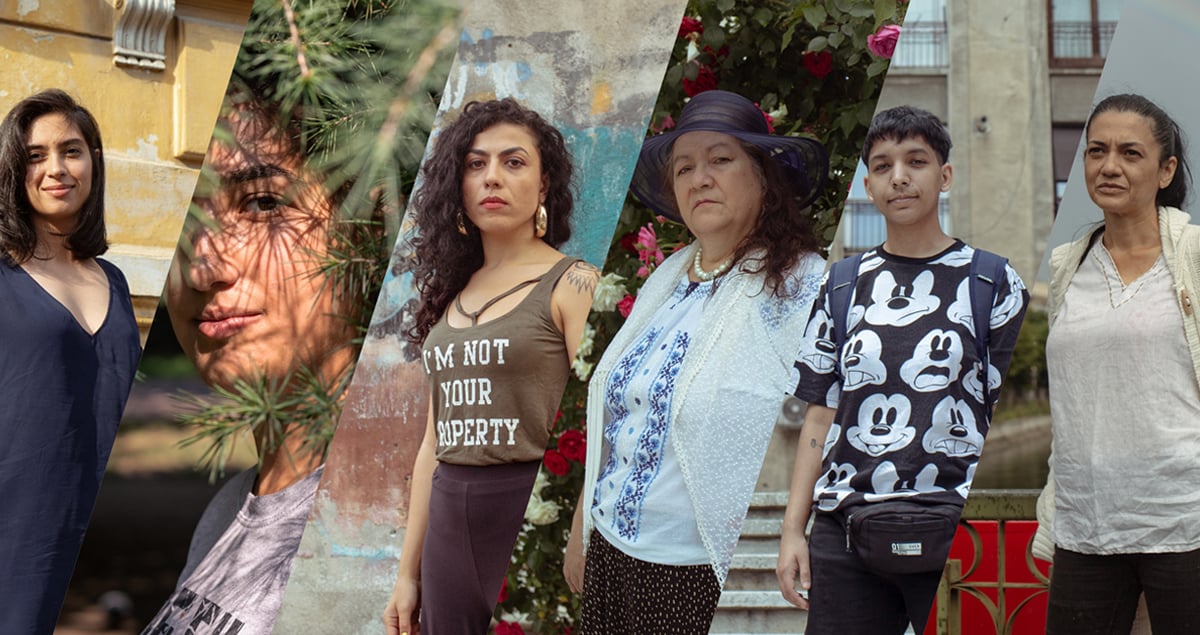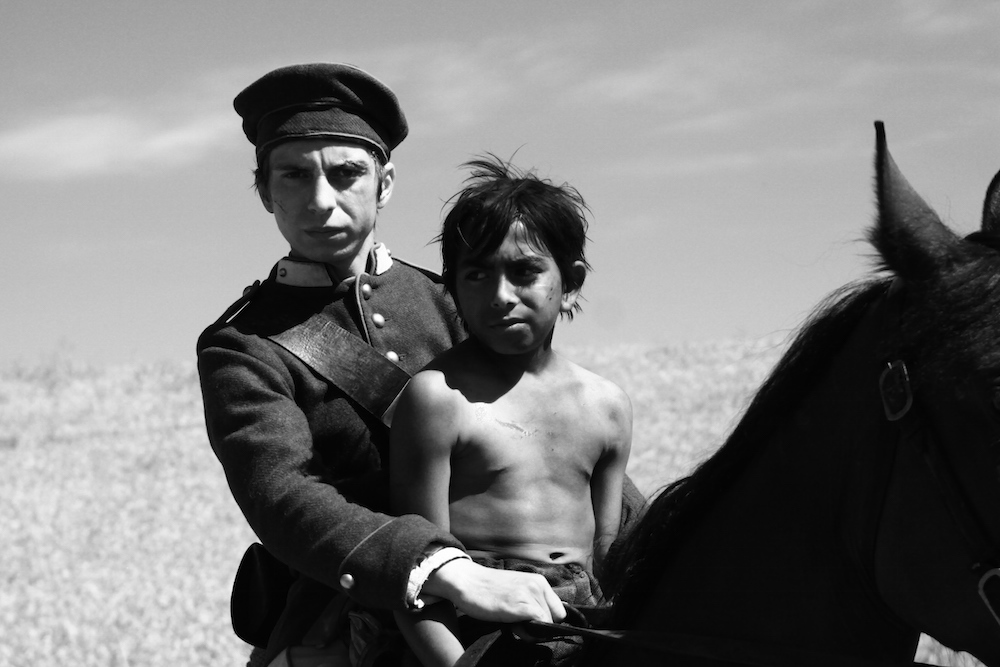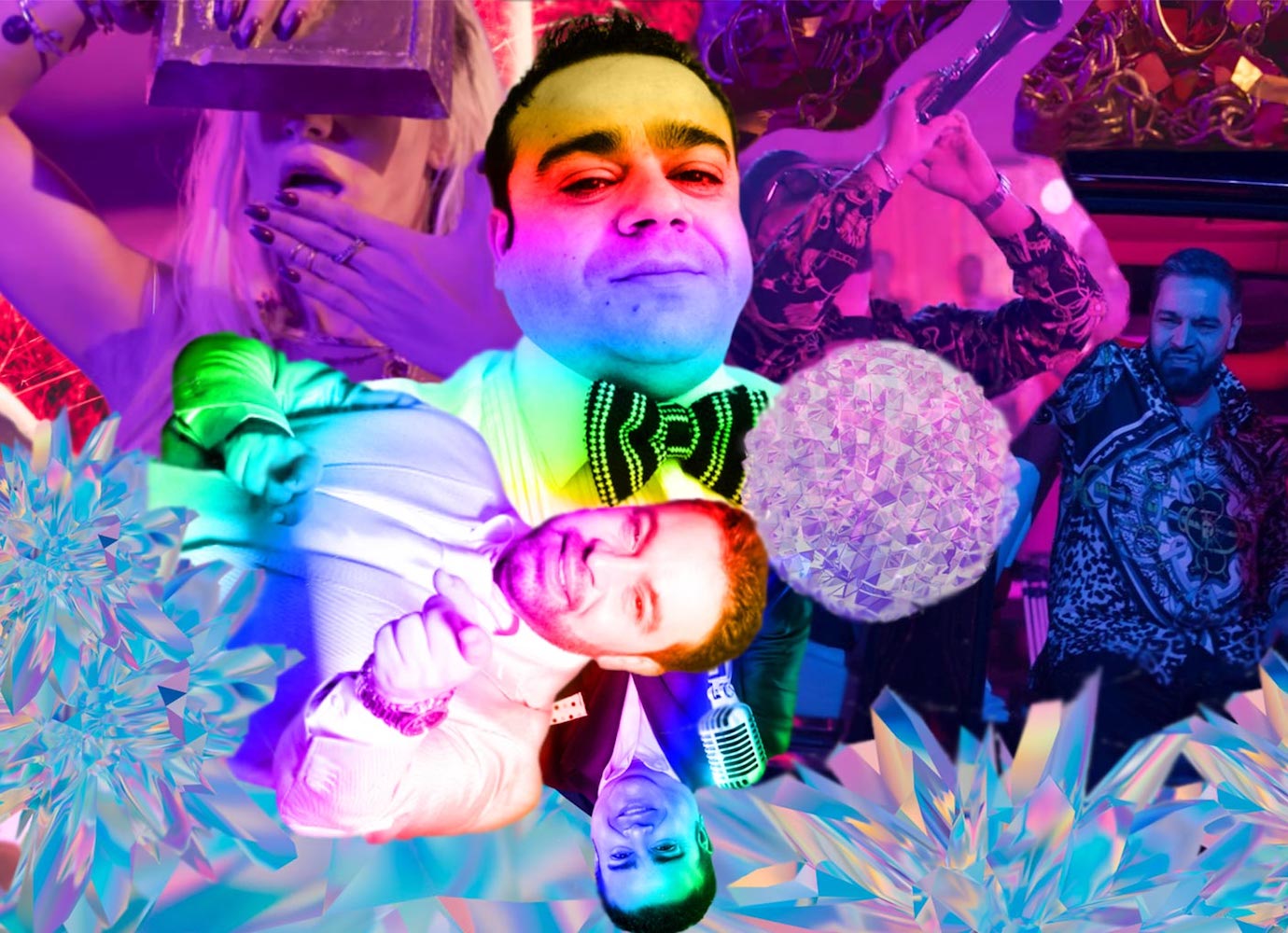The Pentagon and the Titanic: the story behind the grand homes of the Roma capital Soroca in Moldova
Built on the banks of the meandering Dniester river, the town of Soroca in Moldova is known informally as the former Soviet Union’s Roma capital. According to official stats, more than 2,000 Roma live in Soroca, out of Moldova’s total Roma population of 9,000. Unofficially, the community could be much larger. Many Roma face disproportionate barriers, such as poverty and prejudice, to social inclusion, and don’t participate in censuses, while others avoid declaring their ethnicity, fearing stigmatisation.
Why Soroca? Since the Second World War, when the Roma in Soroca were among the few Roma communities not to be deported from what was then Romania, the history of Soroca’s Roma has gone through several distinct phases, says the town’s traditional Roma leader, Baron Artur Cerari. Dressed in work clothes, with an orange cap on his head, we — the photographer and I — catch Cerari while he’s coordinating work on some electric wires at his home with a plumber. His wife and daughter are cooking, while his five-year-old granddaughter clings to him, either asking to play games on his smartphone or shouting ironically, “baronaș, baronaș!” (“little baron! little baron!”).
The beginning and the end of each of these phases can be seen in the town’s architecture. Soroca has drawn international media attention with its massive, often half-finished, houses. Built and designed by Roma families, they often replicate famous buildings from around the world, from the Washington Pentagon and Istanbul’s Hagia Sophia to Moscow’s Bolshoi Theatre.
At Cerari’s house, two life-sized statues of golden horses stand proudly by the entrance to the three-storey red brick building — a gift from their sculptor last year, he explains. A few steps away, in the courtyard, there is a collection of two unused Soviet-era luxury cars, and two Ladas. The baron is planning to fix them up one day. One of the cars used to be Soviet General Secretary Andropov’s, he adds. “I got it when the parking lots in Crimea were privatised, in the early 1990s.”
But while the outlandish architecture attracts photographers, each building is only the end result of a much larger story, one that traces an economy and a community’s rise and decline.
Romani communities are traditionally divided by occupation, and the Roma in Soroca were known as ciocănari (blacksmiths or hammer makers)
Following the Khrushchev Thaw, the Soviets opened a metal factory which employed most of the Roma community in Soroca. This was no accident: Romani communities are traditionally divided by occupation, and the Roma in Soroca were known as ciocănari (blacksmiths or hammer makers). But by the 1960s, the Roma of Soroca had found they could make far more money travelling across the USSR and working on temporary blacksmithing contracts during the summer rather than being full-time factory employees. Sometimes, they were paid in kind for their work, with grains, oil, and fruit rather than money. They took these products and sold them for profit in other parts of the Soviet Union, where produce was scarce. It was illegal both to be a traveller and sell for profit in the USSR, and Roma passengers would often tell officials checking their tickets that they were “visiting relatives” for the summer. Entire families and communities would move from May until September, while the children were on their school holidays. Then they’d live off the money they’d earnt for the rest of the year. Some profits were also funnelled into building, which is when the first big houses started to appear: grey, two-storey homes that were a few times bigger than the traditional Moldovan village houses. Some, like the home of traditional Roma judge Pătrunjel (or Parsley, a nickname his mother gave him), have Roman columns supporting the first floor.
A second high came in the late 1980s, when non-state-owned cooperatives were allowed to open during glastnost and perestroika. In Soroca, members of the Romani community opened around 300 co-ops that produced underwear. They’d buy the cotton in Uzbekistan, make the clothes in their own homes, employing both Roma and non-Roma seamstresses, and then sell them door-to-door across the whole of the USSR. The business was profitable: Soviet citizens had money but not much to spend it on, and everything was scarce — including underpants.
“Ours was the biggest cooperative: SRL Cerari. We had 1,000 employees,” the baron tells me. During my time in Soroca, I met four other families who had had their own co-ops, with 60 to 120 employees each. “There were 60 sewing machines in this house alone,” Pătrunjel, the judge, says. With experience of selling door-to-door across the Soviet republics for 20 years, the Roma in Soroca already had union-wide distribution in place. More money meant that Roma families bought more land and built bigger homes, often sparking neighbourhood competition.
By the early 90s, residents had begun to embrace ever more outlandish designs: from facades that mimicked the US Capitol, to ramparts shaped as Moscow’s Bolshoi Theatre. Most homeowners drew up the designs themselves, before employing workers to build and artists to make the sculptures. The residents we find aren’t able to explain the reasons why they chose one building model over another. One legend has it that the Bolshoi became an inspiration for one family because it adorns Russia’s 100 ruble note. (The same might be the case for the Capitol building, which decorates the back of the $50 note.) To a large extent, these massive homes mirror the American Dream. As glossy TV shows such as Dallas swept through Eastern Europe in the 80s and 90s, it left an indelible mark on the architecture of towns such as Soroca, whose inhabitants wanted to live such lives themselves. Yet even though the 90s originally heralded optimism and freedom, such dreams fell foul of the economic instability that was spawned by the post-Soviet transition. The break of the Soviet Union, the closing of borders, the ensuing bureaucracy, taxes on international trade, and the shrinking of the market, meant that family co-ops became unprofitable. As the money dried up, many homes were left unfinished. In some cases, the choice was deliberate. Under local law, homes which are more than 80 per cent unfinished don’t have to pay council property taxes.
Today, Soroca’s patriarchs remember the Soviet era as a time of plenty. This, too, is seen in the buildings that surround them, where Soviet rockets adorn homes and fountains. We find the local councillor, and president of Moldova’s Roma Association, Robert Cerari, wearing a red tracksuit in the colours of the Russian flag. The Adidas logo is emblazoned on the right side of the chest, while the hammer and sickle are embroidered on the left.
“We have no rich Roma any longer. Everyone is poor”
“We have no rich Roma any longer. Everyone is poor,” Robert Cerari — Artur Cerari’s cousin — says. We’re sitting in his kitchen, surrounded by his wife, her sister, one of his four sons (and one daughter), and his granddaughter (one of nine grandchildren). “This is our fortune,” he adds, like a true politician, pointing at his family. The 90s are, to a large degree, the root of the poverty that has overtaken the Romani community in Soroca. Just as ethnic Moldovans began emigrating in search of economic opportunities abroad, the Roma in Soroca also began to leave for longer and longer periods, selling rugs, pots and pans, across Russia.
This migration has not been without its traumas. With their parents working abroad, many of the children and teenagers left at home in Soroca fell for hard drugs. Robert Cerari says that as a result, most parents now take their children with them while they travel, but this leads to its own difficulties: “it’s caused a big drop in school attendance rates.” At the moment, just one in four Roma children in Moldova go to school. The rate improved temporarily, by 200 per cent, after one local programme, funded by UNICEF, gave interactive educational and economic support to the Roma children in Soroca for two years between 2016 and 2018, Cerari adds. “The kids were waiting for the minibus an hour ahead of schedule because they were so enthusiastic to attend the summer school,” he says. Now the programme is shut.
“You have so many big and empty homes, and so many children are sleeping on the floor in overcrowded flats — how is that possible?” asks Paraschiva Turculiță, a former fortune teller who gave up her occupation out of (Orthodox) Christian conviction 20 years ago. We are at the cemetery for a traditional Moldovan feast, the Easter of the Meek, where communities gather to commemorate their ancestors. Given the pandemic, this year is a lot quieter than usual at the cemetery (many residents are receiving guests at home instead). Paraschiva gives me two bottles of soda water as alms, as tradition demands, but in a modern interpretation.
We’re still in the graveyard when we’re approached by 13-year-old David. He lives in the Soroca Roma Hill’s one social housing estate, a dilapidated khrushchevka, a few streets away from the large homes we visit. He has nine siblings, and shares a flat with his grandmother (“the only Roma woman here to have worked as a street sweeper for 30 years,” she tells me, proudly), aunt, sister, and cousin. The five of them live in two rooms, David explains. His grandmother and aunt sleep on the bed, and the others sleep on the floor. His cousin, 11-year-old Matvej, has a similar arrangement. He, his father, and brothers sleep on the bed, while his mother and sisters take the floor. The pair take us to their building: on the way there, Matvej beatboxes, while David sings a carol — his favourite genre of music, he explains.
In the courtyard, a group of men in their twenties approach us, slightly tipsy from the feast, and ready to crack a joke. “You see our Titanic?” one of them asks in Russian, pointing at the four-storey khrushchevka. “If only it would sink! Please bring the ocean to sink it,” he adds. After a bit more banter, the group disappears round the corner.
“In the past, we used to be a strongly knit community,” the baron tells me. “Now, people only look out for themselves.” A sign of adapting to capitalism, perhaps. Yet, as I talked to other Roma inhabitants in Soroca, they seemed to say the same of their leaders, and criticise them for putting their own interests above those of the community they claim to represent. There are many faces to Soroca’s Roma hill: there are the patriarchs and their families — most of them, former entrepreneurs in the 80s — living in their lush homes, and there are the people crowding in the rundown “Titanic”. Navigating between a tragic history, the brighter coloured Soviet past, the American dreams of the 90s, the uncertain present, and the economic opportunities abroad, the Roma in Soroca are once again on the move, looking for their luck elsewhere.
